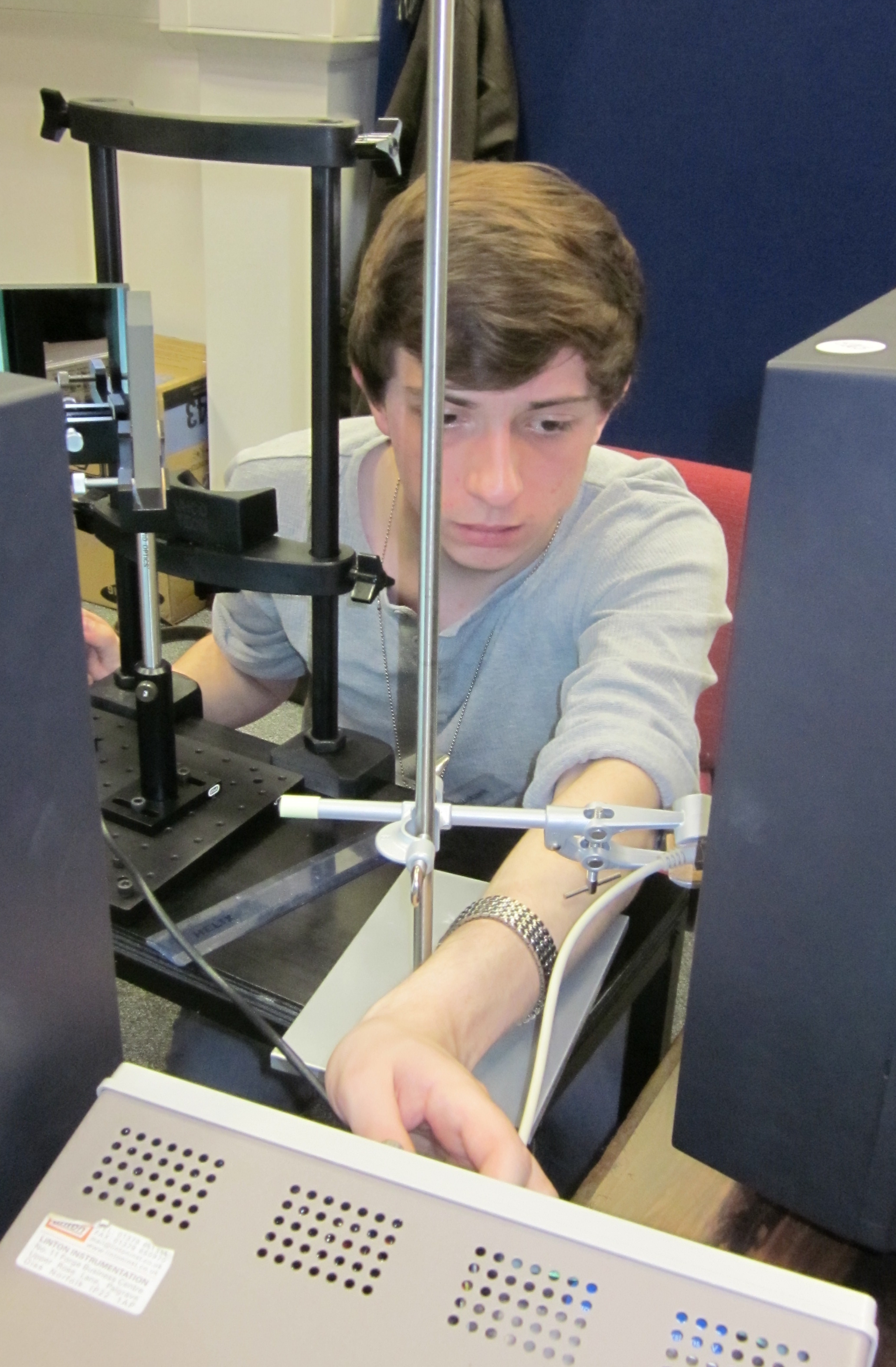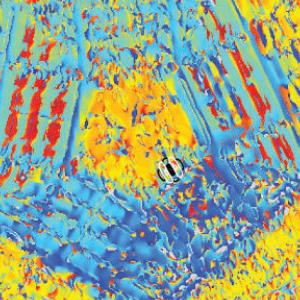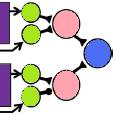
This photo shows undergraduate student Steven Errington checking the calibration of a mirror stereoscope. This is one of the oldest forms of 3D display, and uses mirrors to present different images to the two eyes. The observer will sit with their head in the headrest in front of Steven, and the two mirrors in front of them will ensure that their left eye views a computer monitor to their left, while their right eye views a different monitor on their right. It’s essential the two monitors are aligned both in space and time – that is, that they update their images at exactly the same time. Steven has clamped a photodiode in front of each monitor (that’s the white cable running down by his hand) and fed their inputs into an oscilloscope. Photodiodes output a voltage which depends on the light falling onto them, so each new image presented on the computer monitor shows up as a “blip” on the oscilloscope. Steven can then check that the blips are occurring at exactly the same time, to sub-millisecond precision.




















